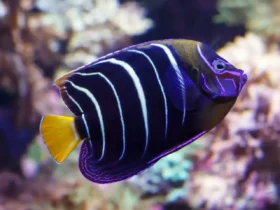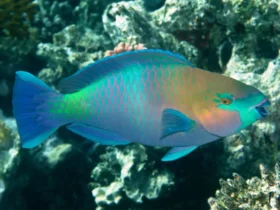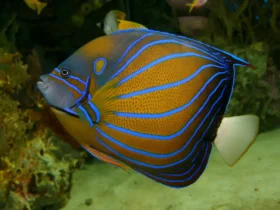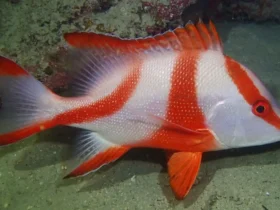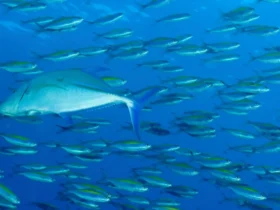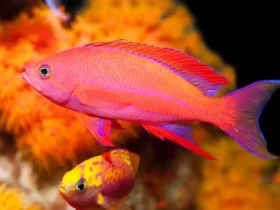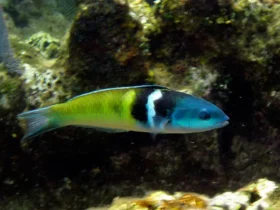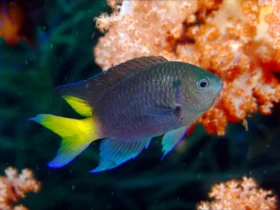Beneath the turquoise waters of coral reefs, a mesmerizing sight awaits divers and snorkelers: the Rainbow Wrasse (Thalassoma quinquevittatum). With its brilliant display of colors and fascinating behavior, this small fish captivates both seasoned marine enthusiasts and casual observers. In this article, we will dive into the captivating world of the Rainbow Wrasse, exploring its appearance, habitat, behavior, and the unique characteristics that make it a cherished inhabitant of coral reef ecosystems.
Rainbow Wrasse images
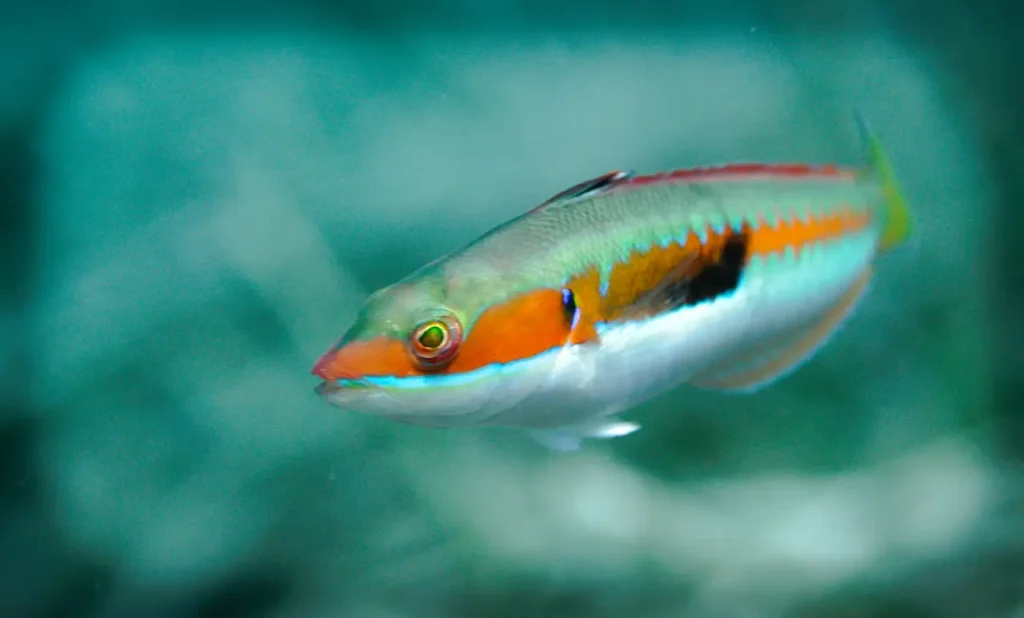
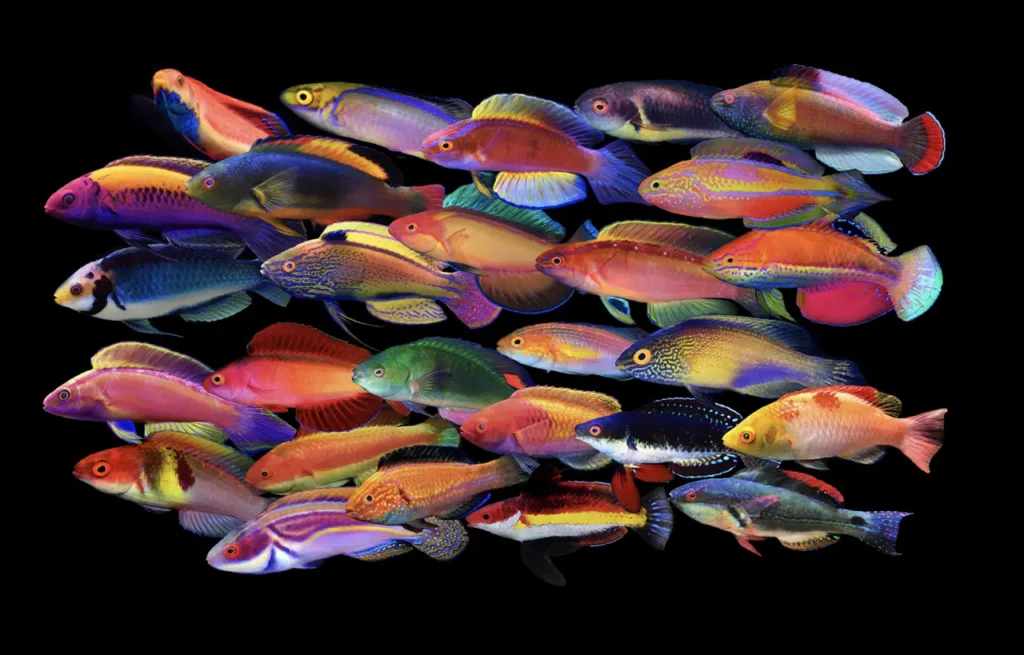
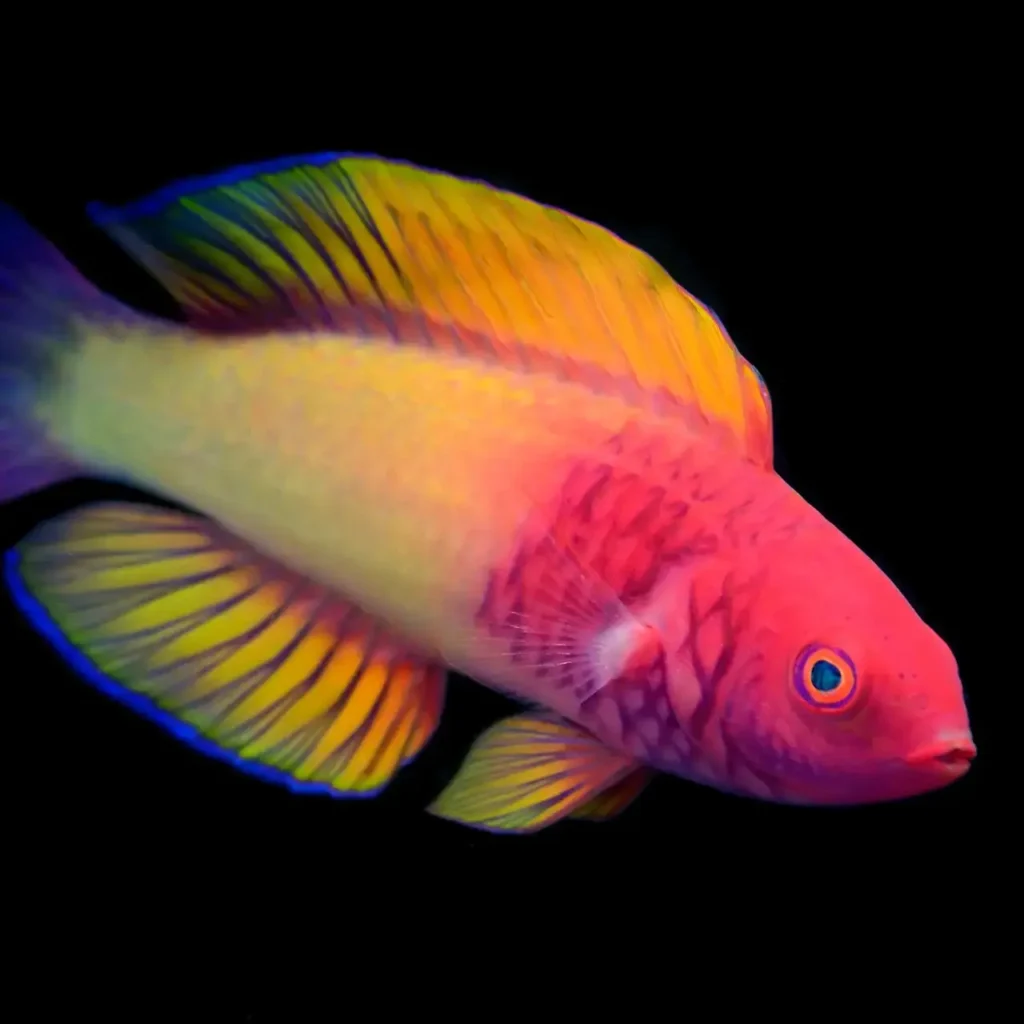
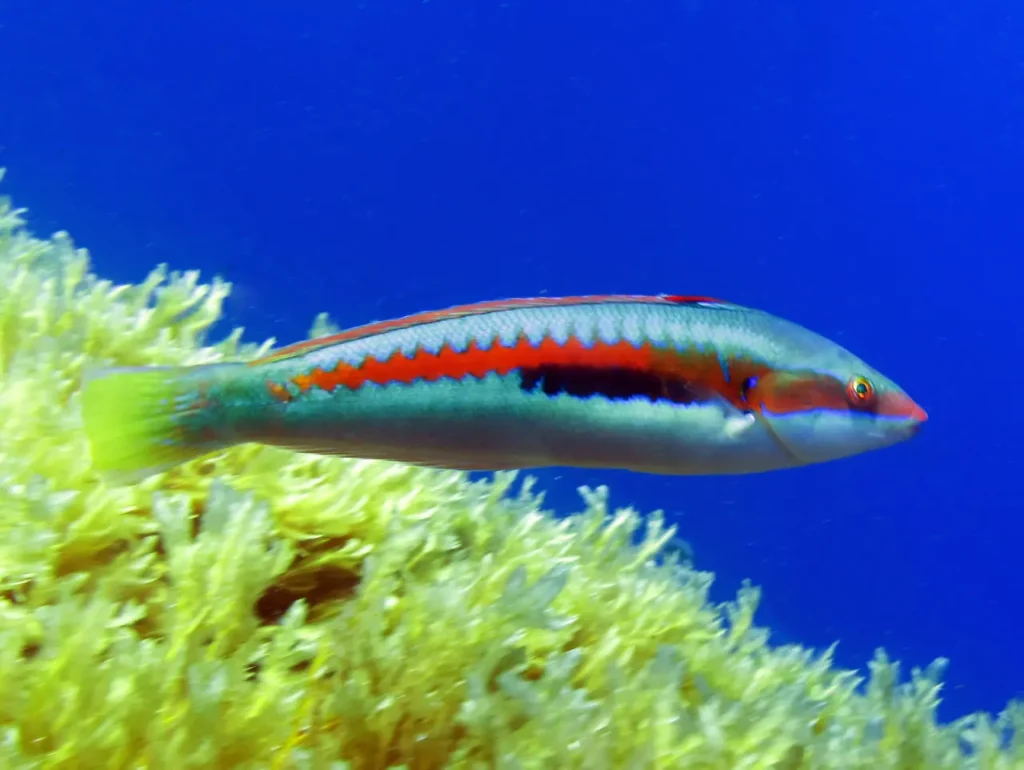
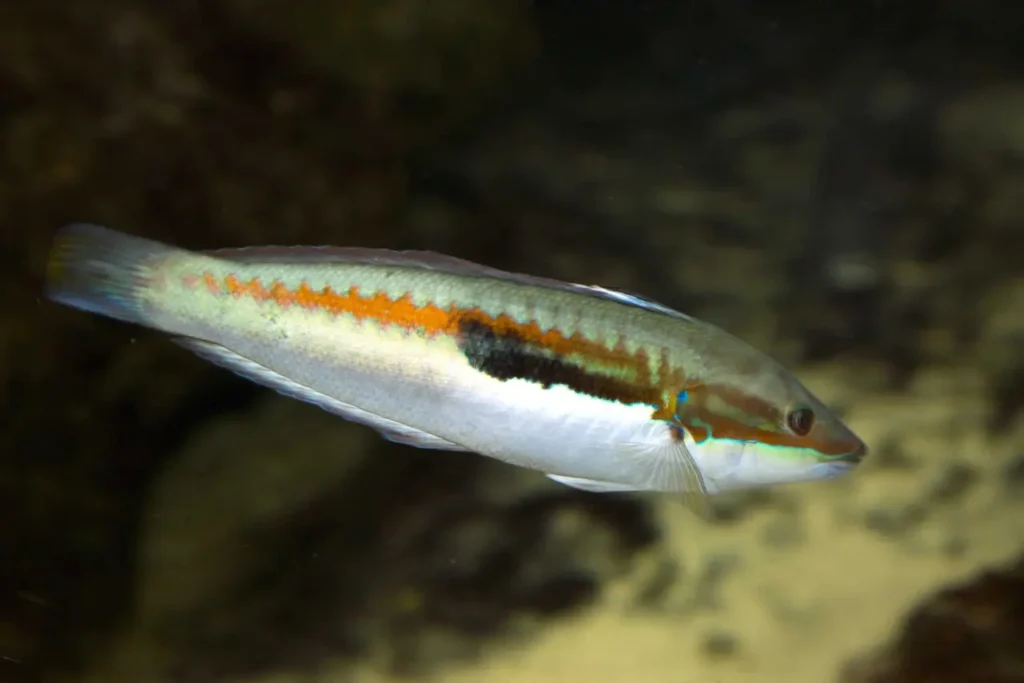
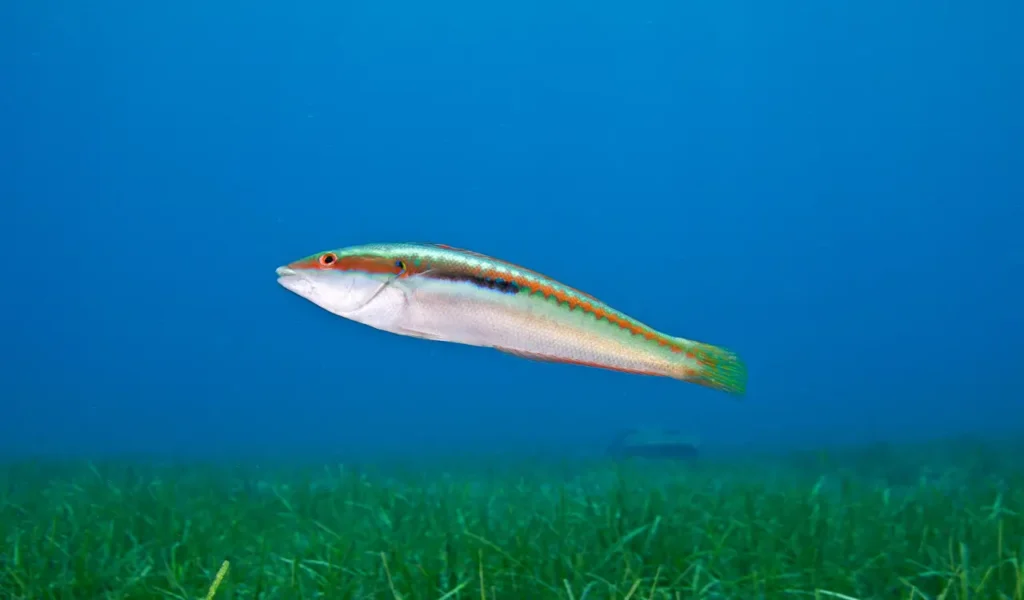
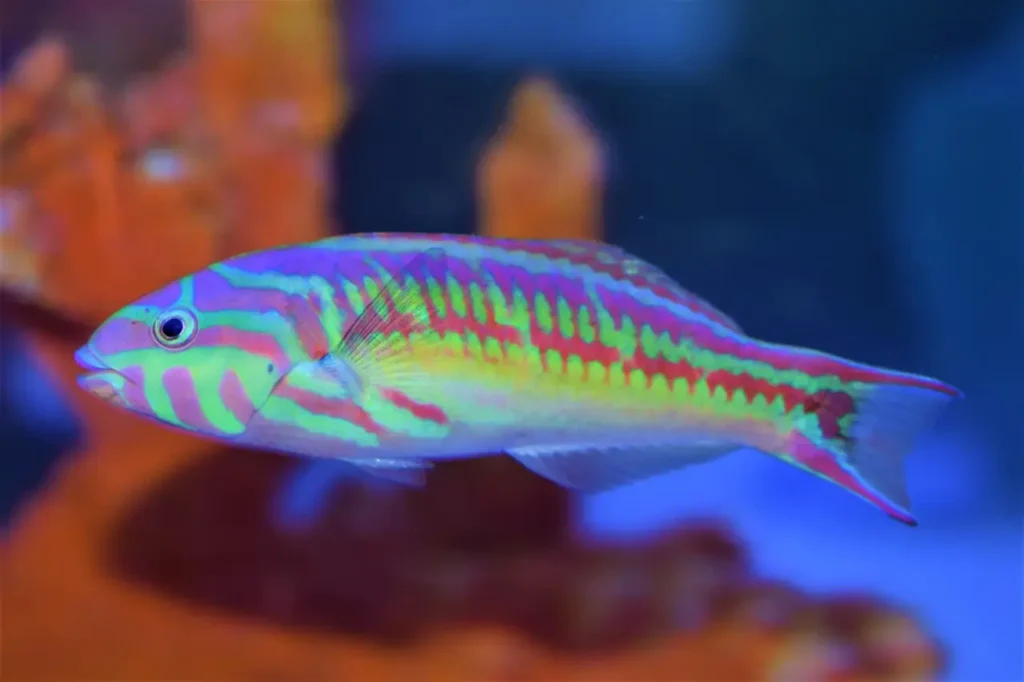
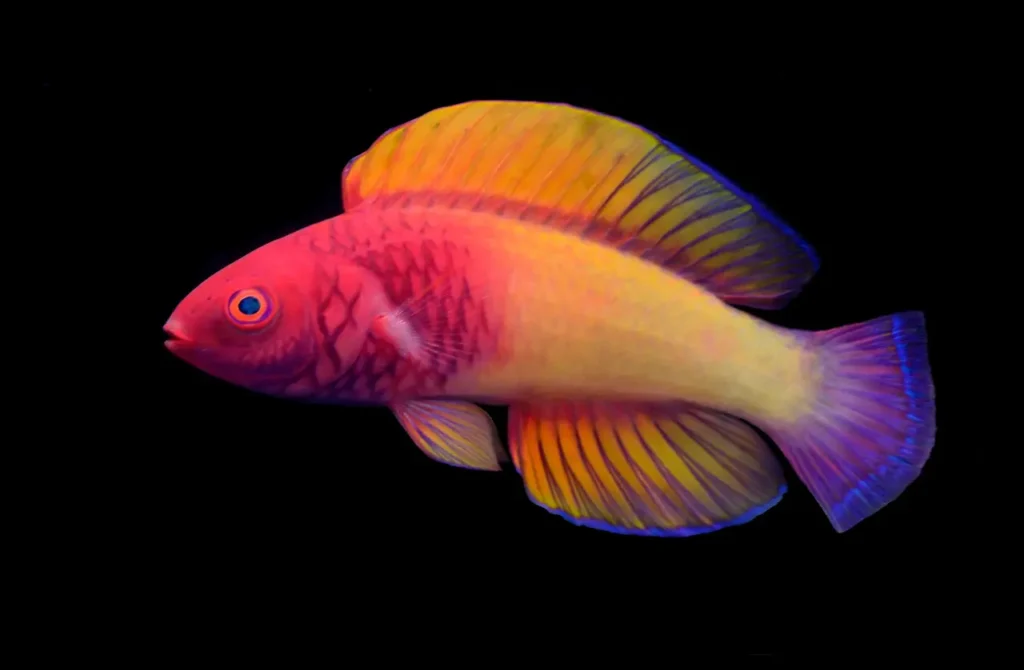
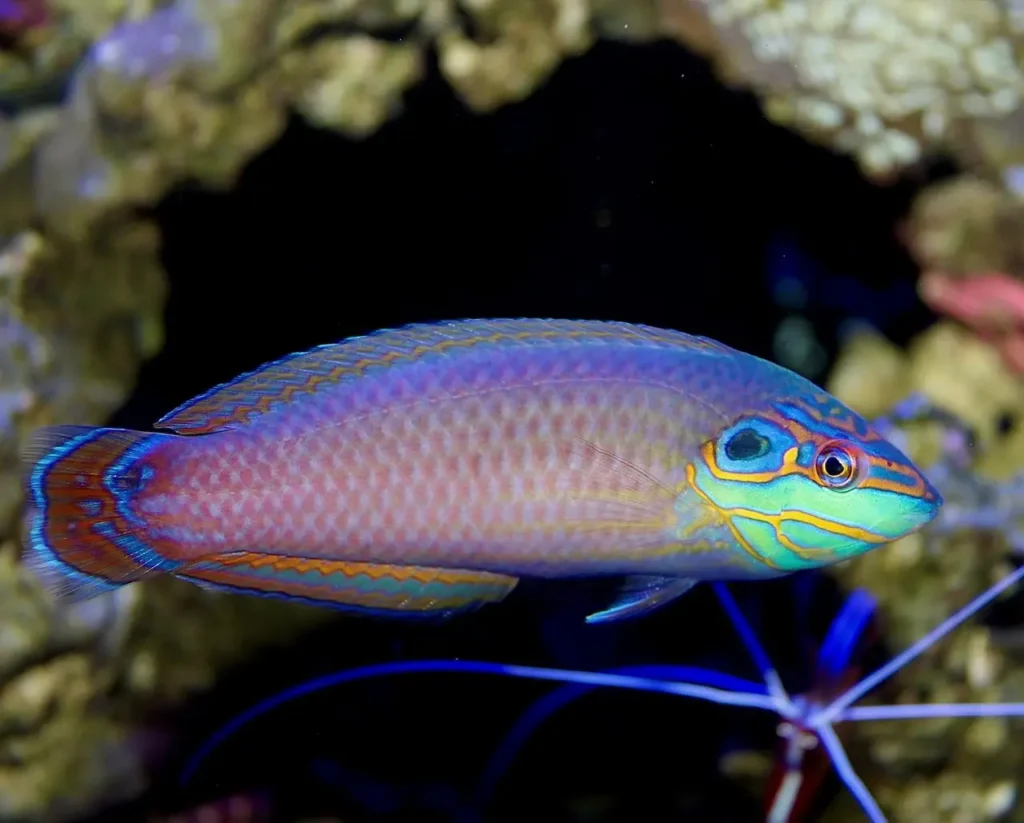
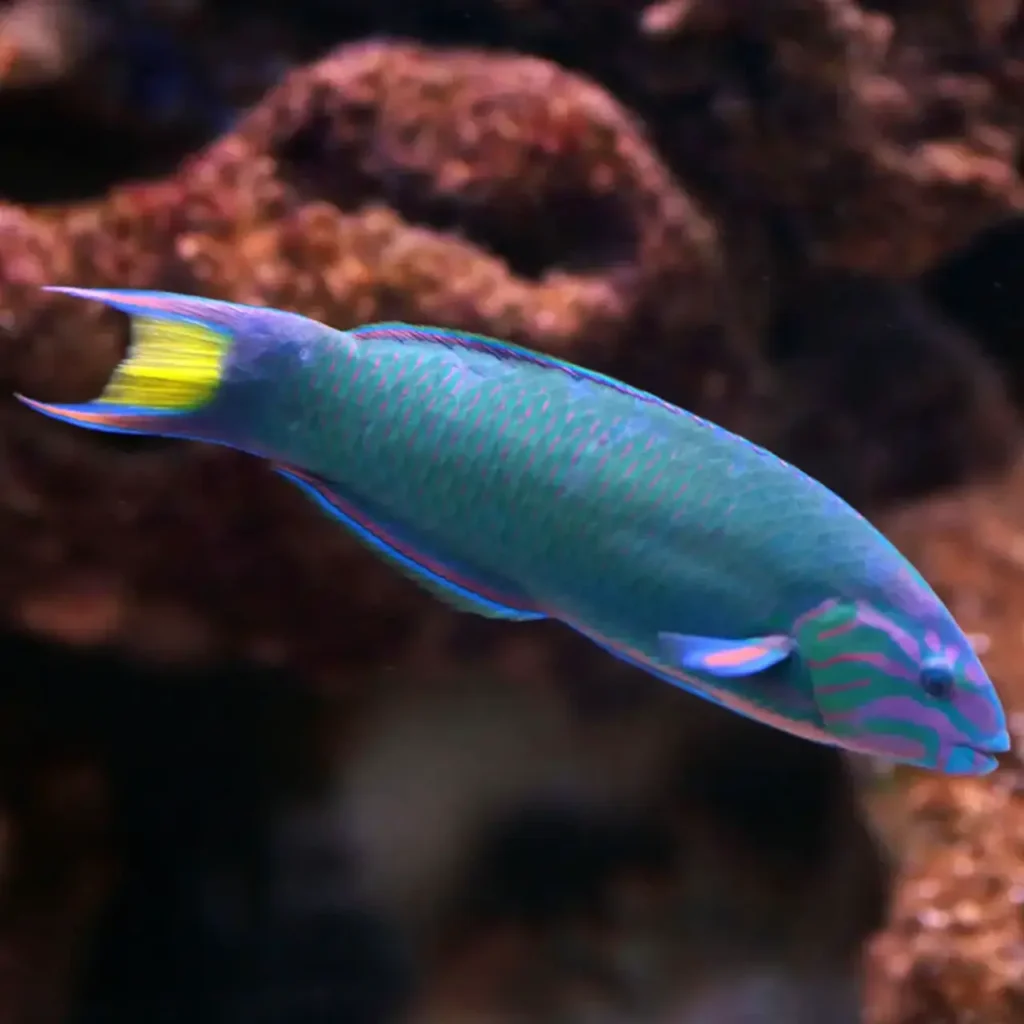
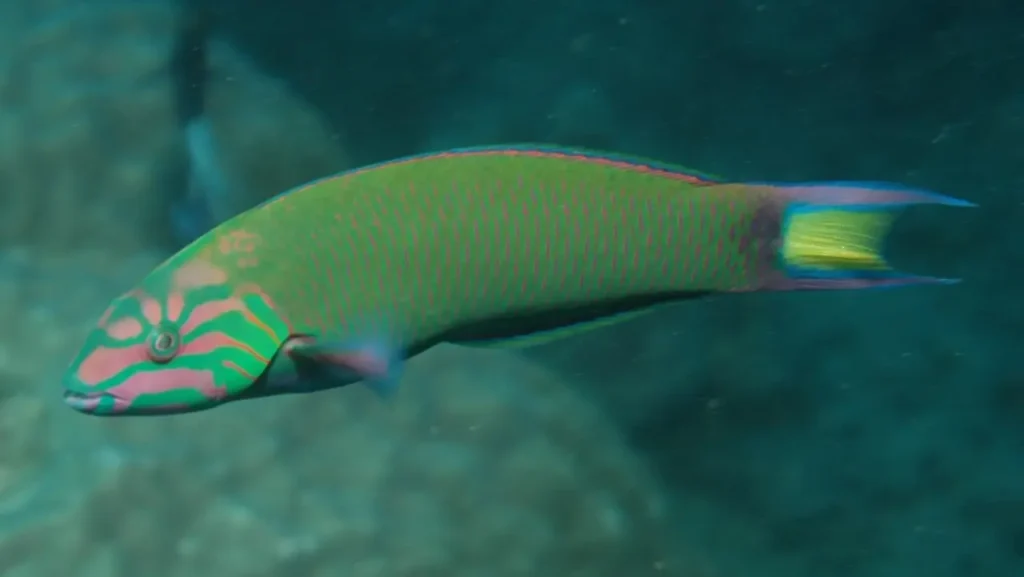
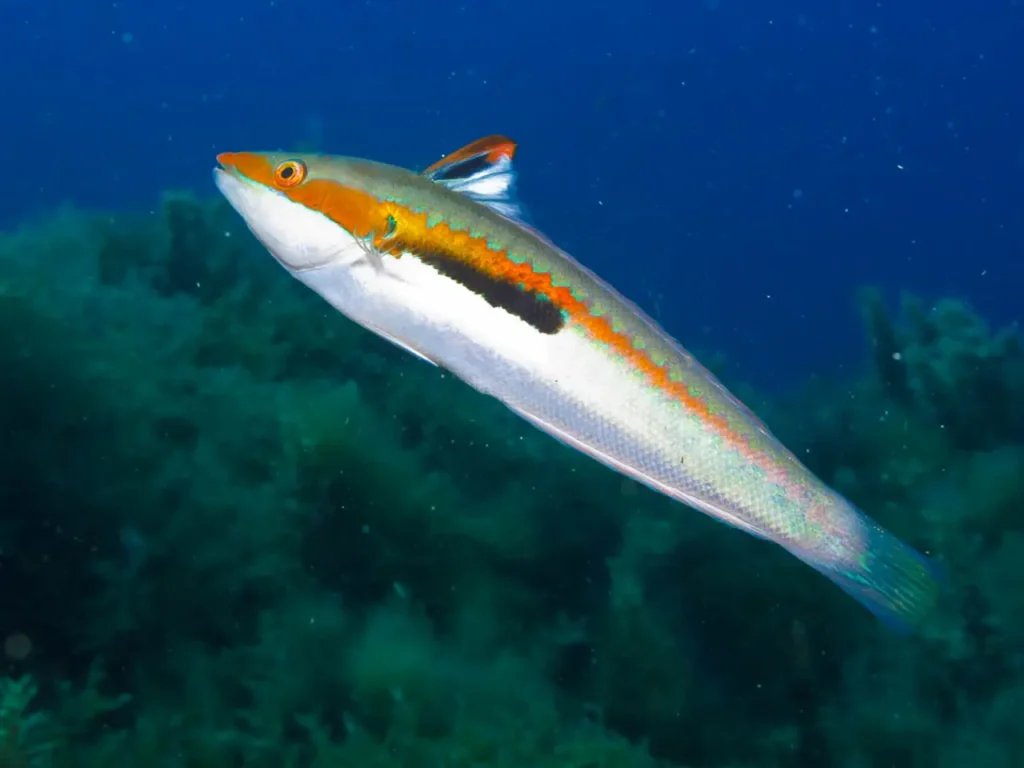
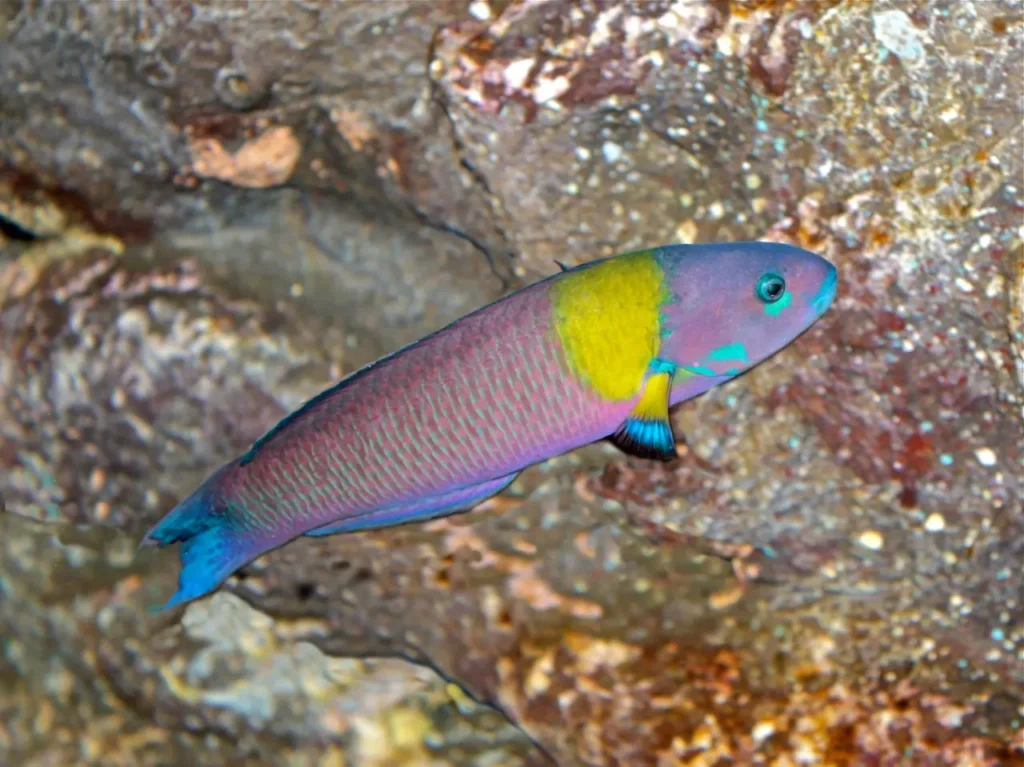
Popular types of Rainbow Wrasse
Rainbow wrasses are a diverse group of colorful fish belonging to the family Labridae. They are known for their vibrant colors and active behavior. Here are some common types of rainbow wrasses:
- Six Line Wrasse (Pseudocheilinus hexataenia): The Six Line Wrasse is one of the most popular rainbow wrasses in the aquarium trade. It has a striking appearance with six horizontal lines running along its body, alternating between purple and yellow or white.
- Melanurus Wrasse (Halichoeres melanurus): The Melanurus Wrasse is known for its vibrant colors and elongated body shape. It typically has a greenish-blue head, a pinkish-orange body, and a black band near the tail. The male and female individuals may have slightly different colorations.
- Carpenter’s Wrasse (Halichoeres margaritaceus): Carpenter’s Wrasse displays a beautiful mix of colors. It has a blue head and a body with alternating horizontal bands of yellow, orange, and blue. This species can change its coloration to some extent depending on its mood and environment.
- Yellow Coris Wrasse (Halichoeres chrysus): The Yellow Coris Wrasse, also known as the Golden Wrasse, is primarily yellow with vibrant blue markings around its eyes and fins. As it matures, the male develops more intense coloration, while the female tends to have a more subdued appearance.
- Lubbock’s Fairy Wrasse (Cirrhilabrus lubbocki): Lubbock’s Fairy Wrasse is a beautiful and colorful species. It has a pinkish-red body with an intricate pattern of blue and orange markings. Males of this species exhibit more vibrant colors than females.
- Exquisite Fairy Wrasse (Cirrhilabrus exquisitus): The Exquisite Fairy Wrasse is highly sought after for its stunning coloration. It features a vibrant mix of red, purple, and orange, with blue accents on its fins. The male has more intense colors, while the female is paler in comparison.
- McCosker’s Flasher Wrasse (Paracheilinus mccoskeri): This species is known for its vibrant color display during courtship. The male has a stunning combination of blue, yellow, and red-orange colors, while the female is more subdued with shades of pink and white.
- Filamented Flasher Wrasse (Paracheilinus filamentosus): The male Filamented Flasher Wrasse has a striking appearance with elongated filaments extending from its dorsal fin. It exhibits a mix of blue, orange, yellow, and red colors. The female is less colorful and lacks the filamentous extensions.
- Leopard Wrasse (Macropharyngodon meleagris): The Leopard Wrasse showcases a unique pattern of leopard-like spots on its body. It has a vibrant mix of colors, including shades of green, blue, yellow, and orange. This species undergoes a dramatic color change as it matures.
- Scott’s Greenback Wrasse (Halichoeres iridis): Scott’s Greenback Wrasse has a predominantly green body with intricate patterns of blue and orange. The male features a distinctive blue patch near the tail, while the female has a more subdued coloration.
- Radiant Wrasse (Halichoeres iridiscentis): The Radiant Wrasse is aptly named for its iridescent colors. It exhibits a beautiful blend of blues, purples, and yellows, creating a captivating visual display. The male tends to have brighter colors than the female.
- Paddlefin Wrasse (Thalassoma lucasanum): The Paddlefin Wrasse is known for its unique paddle-like extension on its dorsal fin. It has a vibrant mix of colors, including green, blue, and orange, with striking patterns. This species can undergo color changes as it transitions from juvenile to adult stages.
- Scott’s Fairy Wrasse (Cirrhilabrus scottorum): Scott’s Fairy Wrasse is known for its vibrant colors and intricate patterns. Males typically display a combination of yellow, blue, and red, while females have a more subdued appearance with shades of pink and white.
- Red Velvet Wrasse (Cirrhilabrus rubrisquamis): The Red Velvet Wrasse is named for its velvety red coloration. It has a striking appearance with a deep red body and contrasting blue accents on its fins.
- Yellowfin Flasher Wrasse (Paracheilinus flavianalis): The Yellowfin Flasher Wrasse displays a vibrant combination of yellow, orange, and blue colors. Males have elongated dorsal fins and vibrant yellow fins, while females are more subtly colored.
- Longfin Fairy Wrasse (Cirrhilabrus rubriventralis): This species is characterized by its long, flowing fins. It has a deep red body with a contrasting white underside. The male has more intense red coloration, while the female is lighter in color.
- Bluehead Wrasse (Thalassoma bifasciatum): The Bluehead Wrasse is named for its vibrant blue head, which contrasts with its green body. As it matures, the male develops a bright yellow stripe along its back.
- Yellow Coris Wrasse (Halichoeres chrysus): The Yellow Coris Wrasse, also known as the Golden Wrasse, exhibits a predominantly yellow coloration with blue accents on its fins and face. As it grows, its colors intensify.
- Ruby Longfin Fairy Wrasse (Cirrhilabrus rubrisquamis): This species showcases stunning colors, including shades of pink, red, and purple. Males have elongated fins, while females have shorter, rounded fins.
- Filamented Wrasse (Nemateleotris magnifica): The Filamented Wrasse is known for its vibrant colors and elongated, filament-like dorsal fins. It typically has a combination of blue, orange, and yellow colors.
These are just a few examples of rainbow wrasses, but there are many more species and color variations within the wrasse family. Each type of rainbow wrasse adds a splash of vibrant color to reef aquariums and brings dynamic activity to marine ecosystems.
Appearance and Coloration
The Rainbow Wrasse is renowned for its striking and vibrant coloration, hence its name. Male individuals exhibit a kaleidoscope of hues, with a deep green or blue body transitioning into a yellow or orange midsection, and finally culminating in a bright red or pink tail. These colors seem to shimmer and change as the fish moves, creating a captivating visual spectacle. Female Rainbow Wrasses, on the other hand, exhibit more subdued colors, typically featuring shades of brown or yellow.
Habitat and Distribution
Rainbow Wrasses are found in the tropical and subtropical waters of the Indo-Pacific region, including the coral reefs of the Indian Ocean, the Red Sea, and the western Pacific Ocean. They prefer areas with ample coral coverage, as they rely on the reef structure for shelter and foraging opportunities. These vibrant and diverse habitats provide the perfect backdrop for the Rainbow Wrasse’s fascinating behavior and interactions with other reef inhabitants.
Behavior and Feeding Habits
Rainbow Wrasses are active and agile swimmers, often darting in and out of coral crevices and gaps in search of food. They have a varied diet, feeding on a combination of small invertebrates, crustaceans, and plankton. Interestingly, Rainbow Wrasses play a crucial role in coral reef health, as they help control populations of parasites and algae that can harm the coral. Their foraging activities and constant movement also contribute to the dispersal of coral larvae, aiding in the reef’s recovery and regeneration.
Social Structure and Sex Change
Rainbow Wrasses exhibit a unique reproductive strategy known as sequential hermaphroditism. Initially, all individuals are born as females. As they mature, some females will undergo a dramatic transformation and transition into males. This sex change is influenced by various factors, including social hierarchy and the absence of dominant males in a particular area. The change in sex is accompanied by a transformation in coloration, with the male acquiring the vibrant hues for which the species is known.
Conservation Status and Threats
The Rainbow Wrasse is currently listed as a species of least concern on the IUCN Red List. However, like many coral reef-dependent species, it faces several threats that require conservation attention. Habitat degradation, overfishing, pollution, and climate change impacts such as coral bleaching pose risks to their populations. Conservation efforts focused on preserving coral reef ecosystems, implementing sustainable fishing practices, and raising awareness about the importance of protecting these vibrant marine species are vital for their long-term survival.
A Symbol of Underwater Beauty
The Rainbow Wrasse serves as a shining symbol of the mesmerizing beauty found within coral reef ecosystems. Its vibrant colors, graceful movements, and ecological significance make it a cherished inhabitant of the underwater world. As we continue to appreciate and protect our oceans and coral reefs, let us strive to safeguard the habitats that support the Rainbow Wrasse and the myriad of other species that contribute to the colorful tapestry of life beneath the waves.

